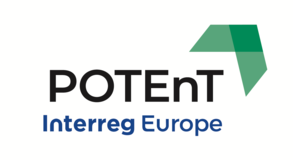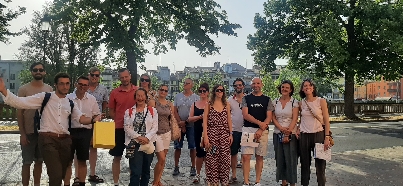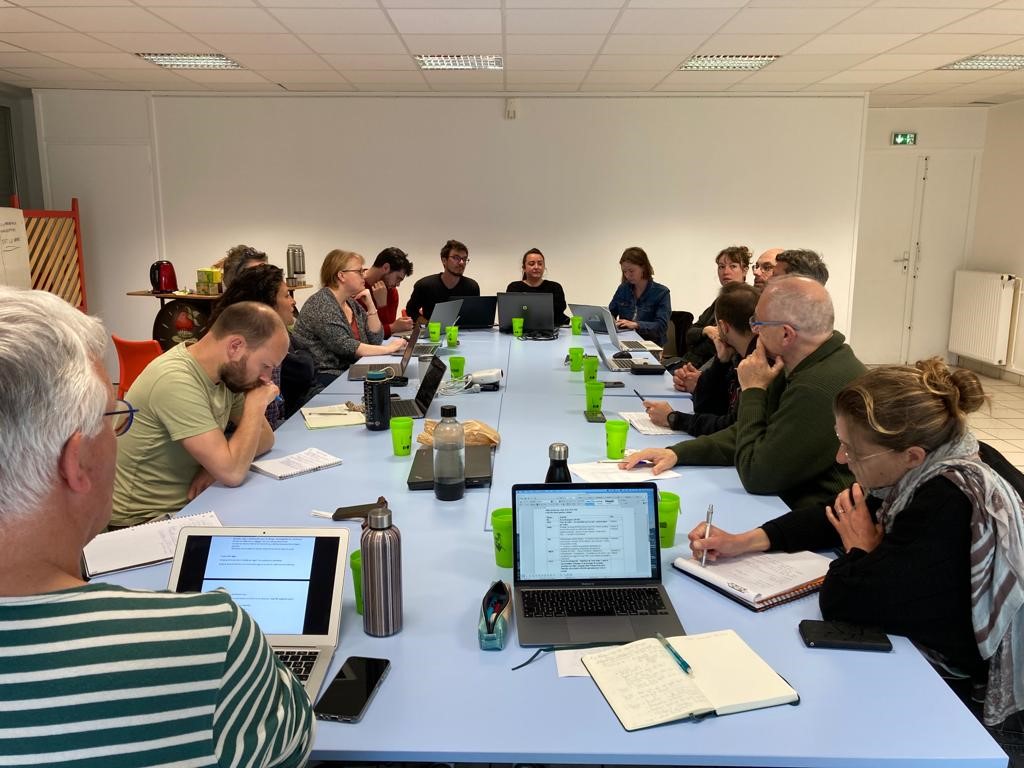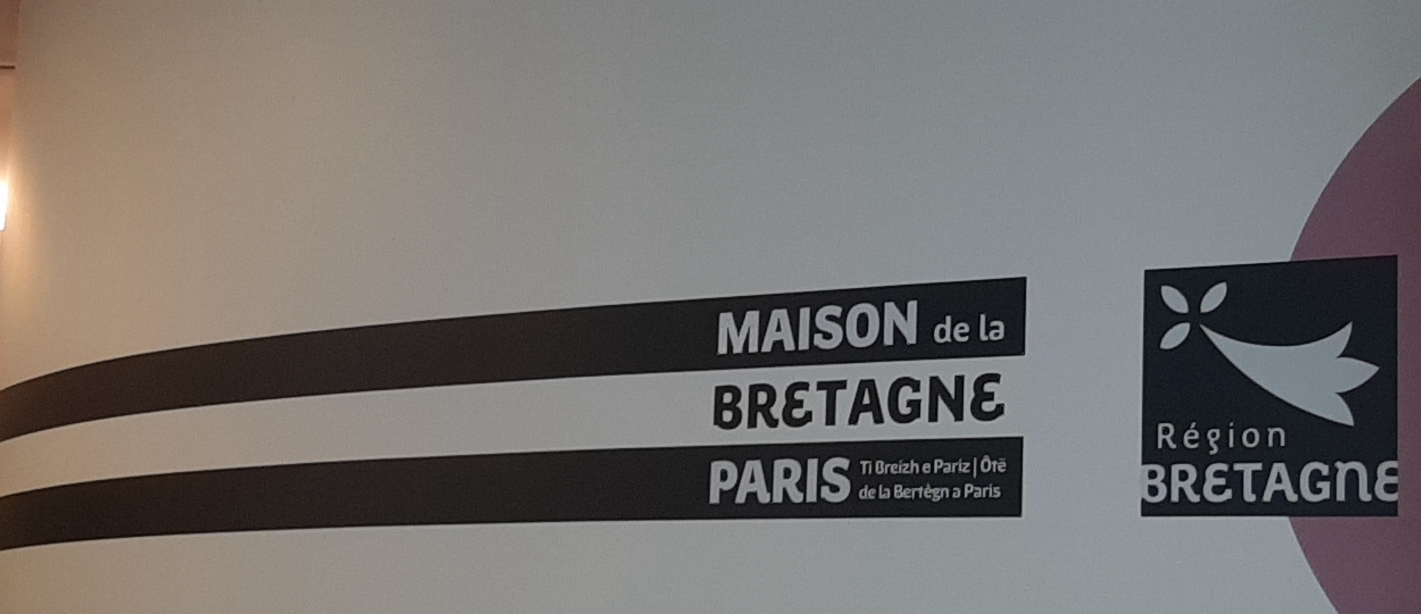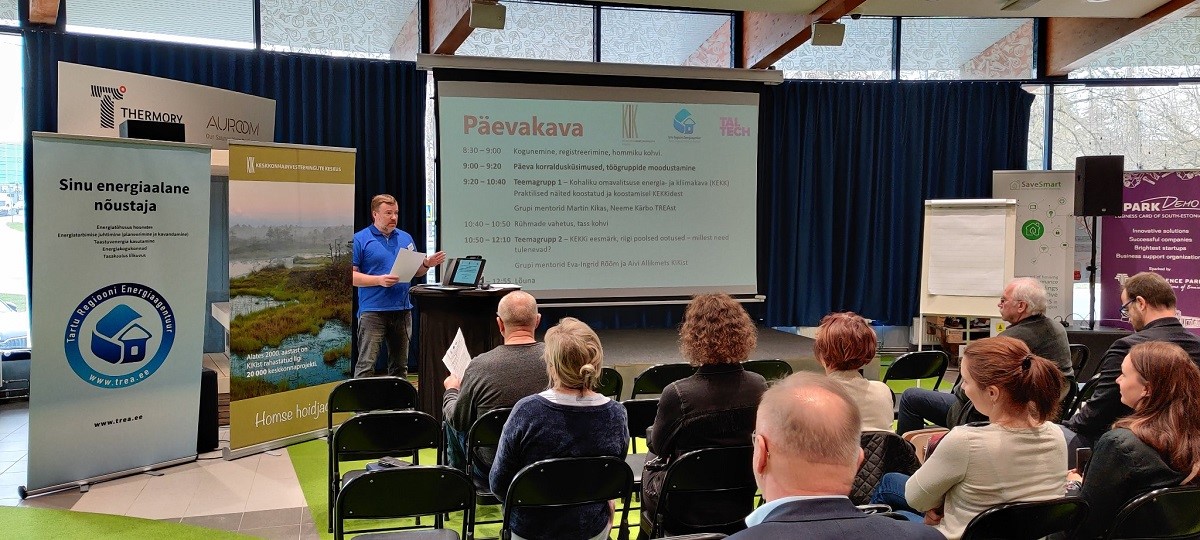The transition from summer to autumn has always been challenging for everyone, what could be better than a powerful, interesting, and friendly POTEnT event to help us to face this?
On Friday 17 September a new study visit opened the 5th semester of the project. Nearly 30 participants attended the event jointly organized by Stadtwerke Ettlingen and Energikontor Sydost on energy communities in Germany and Sweden.
The first part of the presentation dealt with the role of local authorities in promoting and supporting the creation of energy communities (CER). The need for social cohesion is in fact crucial in this phase of the energy transition, where technology and sociology meet, not only to foster technological development but also to promote a bottom-up approach from the point of view of consumers.

However, it must be said that the concept of energy communities is anything but a standardized technology package. This event showed us why. Indeed, a critical factor to consider is that the national legal framework shapes the way energy communities grow.
For example, in Germany, national laws set a fixed price for electricity for 20 years. This framework has stimulated the intention of citizens and entrepreneurs to buy shares of existing energy cooperatives that sell electricity to the grid at a fixed price. More about the role of local authorities in promoting energy communities can be fond on EnergyCities website.
In summary, public administrations can be facilitators in the ERC development with some easy steps:
- include the strategic objective of promoting energy communities in the Action Plan for Sustainable Energy and Climate (SECAP);
- projects open to citizen participation;
- provide access to public sites for new pilot projects.
The second presentation showed an energy community in the Karlsruhe Ettlingen region, funded in May 2012. Today it has 190 members including citizens, housing associations, and Stadtwerke. The core business is simple: the cooperative installs photovoltaic panels on the roof of public buildings, provided free of charge by the local authority. Each member can purchase community shares from one up to 200. The CER, under this objective, is a retail company that sells energy to the grid. From 2019 to 2021, the energy community recorded a growth of almost 40% of its members, currently owning 31 plants in 2021, with a profit of 30,000 euros for last year.
The third presentation was about the creation of the Müllheim municipal energy company, Stadtwerke MüllheimStaufenGmbH, founded in 2009 as an operator of the parent company Stadtwerke Ettlingen. In 2012, it created an independent energy cooperative, supported by citizens and companies as investors.
This is part of a three-pillar corporate vision based on:
- the municipal energy company;
- the energy community;
- two local authorities that support the production of RES.
The attractiveness of the green energy philosophy, the renewable energy mix of Stadtwerke MüllheimStaufenGmbH including hydroelectric, solar, and wind power, together with the creation of the energy community led to successful growth in the company's business resulting in a 45% turnover increase from 2012 to 2016. The next strategic step is developing the necessary infrastructure and services for smart cities. This entails many elements such as telecommunications platforms, broadband, fiberglass, high-speed Internet, and electric mobility solutions.
Energy communities have a long history in Sweden, which began in the early 1900s when massive nationwide electrification opened the door to new business opportunities for energy co-operatives, some of which still run today.
In the meantime, many municipal energy companies have sprung up. The Vaxjo energy company is the first example in Sweden, created in 1887. Again, the price of electricity is a strong driver for the outbreak of energy communities, making their business attractive to investors. This was an important chapter in Swedish large-scale electrification from 1930 to 1985.
In Sweden too the role of municipal energy companies is central to the development of energy communities, as in the case of Kalmar Energi, a municipal energy company that is a grid owner and manages district heating in Kalmar. In 2006, Kalmar Energi created a wind energy cooperative. However, when solar panels became affordable in 2015, many photovoltaic energy communities spread out, such as Nobble Solar Farm (600 KWp) and Torneby Solar Farm (2.3 MWp).

Furthermore, CER can be a good solution for housing associations or for reusing inaccessible areas, such as the Karlskrona Solpark.
Many exciting questions sparked an end-of-session debate. After the latest thoughtful considerations regarding the future implementation of the long-awaited REDII directive, we can say that the German and Swedish CER formulas have achieved their goal in expanding renewable energy production and reducing energy waste by providing some interesting examples.
